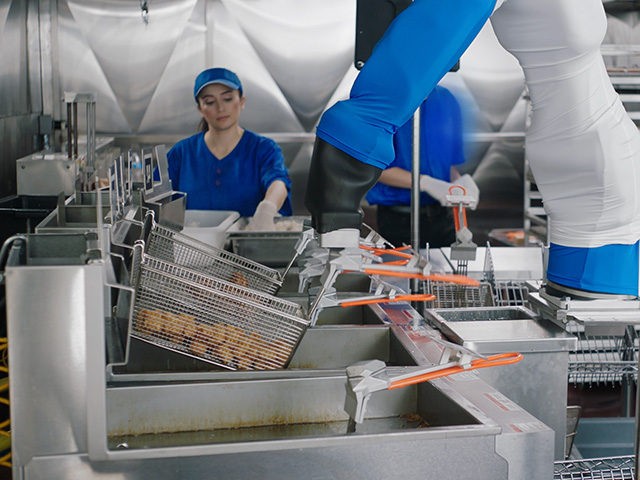
29 Feb 2020
Burger-flipping robots are changing the food service industry by offering their services to restaurants for about $3 an hour.
Miso Robotics’ machine named Flippy is “the world’s first autonomous robotic kitchen assistant that can learn from its surroundings and acquire new skills over time,” according to the company’s website.
This is good news for restaurant owners because it would cost them less to employ Flippy than a minimum-wage worker, the Los Angeles Times reported Thursday.
The article continued:
Off-the-shelf robot arms have plunged in price in recent years, from more than $100,000 in 2016, when Miso Robotics first launched, to less than $10,000 today, with cheaper models coming in the near future.
As a result, Miso can offer Flippys to fast-food restaurant owners for an estimated $2,000 per month on a subscription basis, breaking down to about $3 per hour. (The actual cost will depend on customers’ specific needs). A human doing the same job costs $4,000 to $10,000 or more a month, depending on a restaurant’s hours and the local minimum wage. And robots never call in sick.
Despite the recent gains in technology, presidential candidate Sen. Bernie Sanders (I-VT) has continued to call for a $15 federal minimum wage even though employers may choose to have a robot do the job for less money.
Some business owners in New York have admitted that the mandated $15 minimum wage has forced many of them to cut staff, raise prices, and even shut down altogether.
“You can only cut back so many people before the service starts to suffer,” said Susannah Koteen, who owns the Lido Restaurant in Harlem.
On the other hand, many fear that service industry robots will cause a “job apocalypse” if more employers begin choosing machines over people.
But Ken Goldberg, a professor of engineering at UC Berkeley, predicted that the changes will not be much different than those in the past.
“When spreadsheet software first came out everyone was predicting the end of all bookkeeping and accounting jobs,” he said.
“What actually happened was it changed the job, so accountants didn’t spend their time punching numbers into the adding machine all day, but instead started doing all these visualizations and scenario planning,” Goldberg concluded.
Subscribe to our free mailing list and always be the first to receive the latest news and updates.
